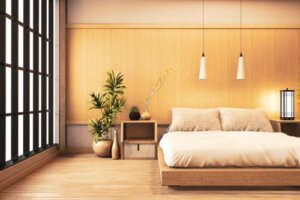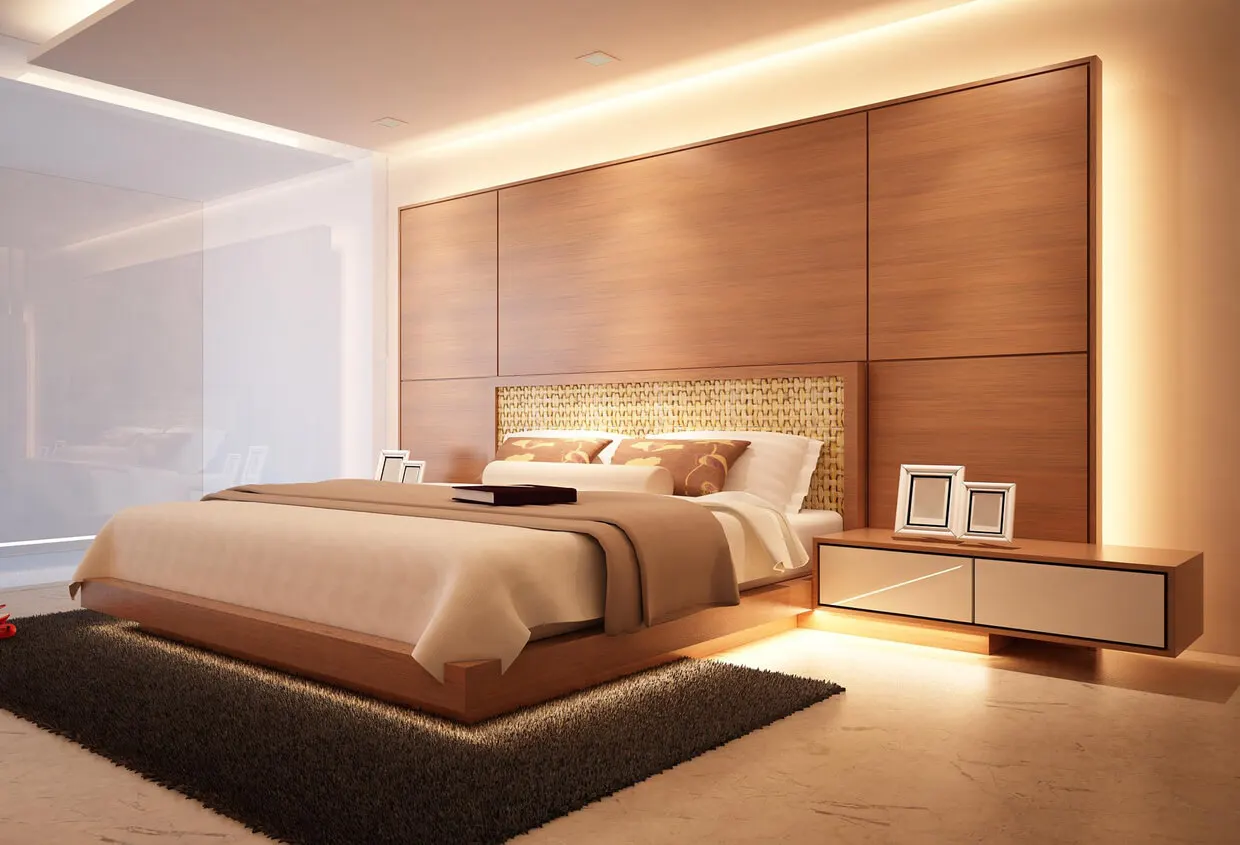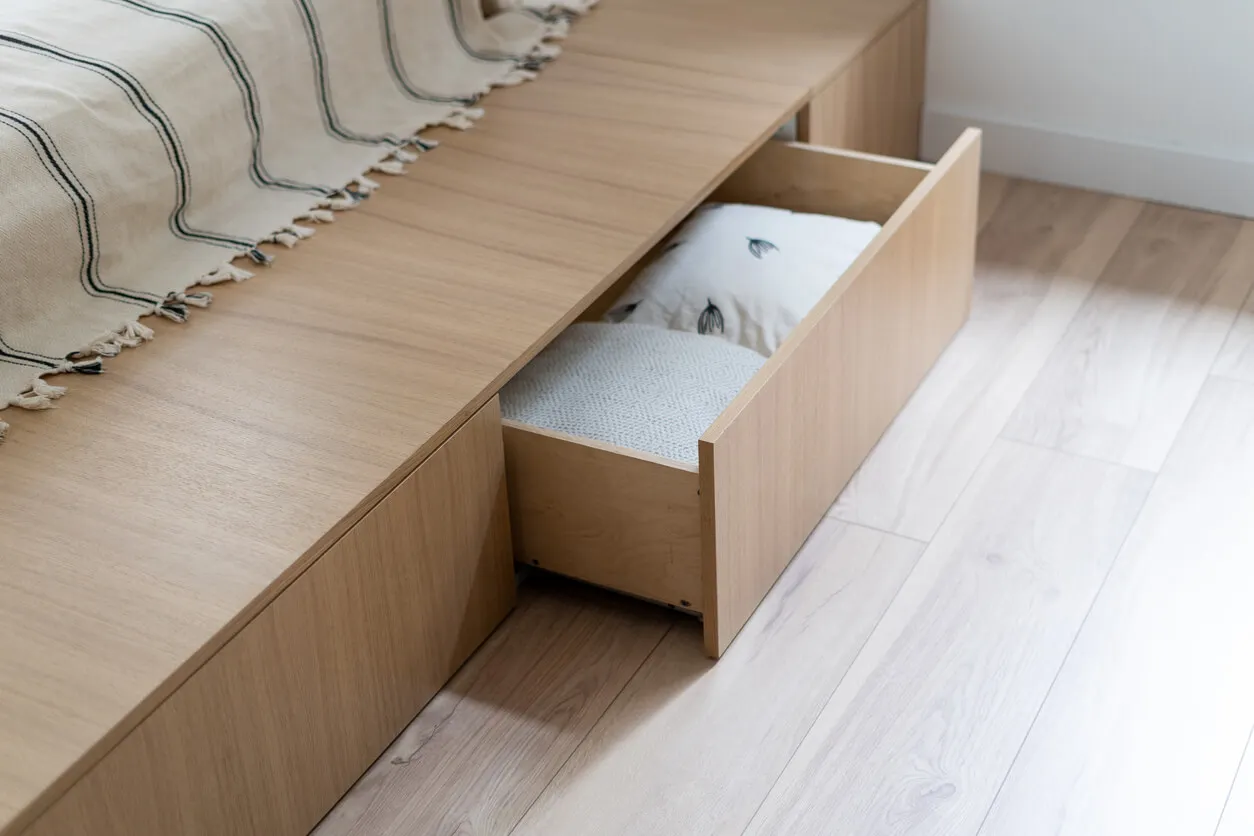What are the Advantages and Disadvantages of Floating Beds?

In recent years, the trend of floating beds in bedrooms experienced significant growth. This piece of furniture has a very striking visual effect.
As it’s supported by a few wall brackets and inconspicuous supports, it creates the sensation of sleeping in the air. In addition, floating beds bring personality and a strong decorative style to all types of rooms.
Although they’re usually used in buildings with more modern designs, it is possible to adapt them to any space. The advantages they offer are many, but they also have some disadvantages that are worth knowing about.
What are floating beds?
Floating beds are installed in rooms from the wall supports, along with a group of supports that aren’t easily identifiable to the naked eye. For this reason, the floating effect is created, something that changes the visual design of a room. This effect isn’t only in the bed, but it creates a more open feeling in the whole room.
The main support is achieved through a platform bolted to the wall, along with a central support that’s attached to the floor. This method of support creates stability and security.
In addition, most models are adjustable. That is, the height and suspension can be at a greater or lesser distance from the floor.
Advantages of floating beds
This type of furniture in the bedroom has a number of advantages that are leading them to be a trend in decoration. Not only for its striking visual effect, but for the extra space they create.

Expansion of space
Being bolted to the wall and with a single support in the center, the floating bed produces the feeling of a much more open space. This isn’t only an advantage from an aesthetic point of view, but also from a hygienic point of view.
With more room under the bed, cleaning is made easier. There are no legs to get in the way.
Suspension
The main feature of floating beds is their ability to generate a visual effect of suspension. It gives the sensation of sleeping in the air.
For those who enter the room, the impression is that the bed is levitating. This is an effect that can be reinforced by the strategic placement of LED lighting.
Adjustable height
Installing a floating bed doesn’t mean that you have to make a big jump to get into bed. The height of each model is adjustable from the moment it’s installed, making it easy to adapt to the needs of each person.
Suitable for various materials
Floating beds blend in very well with modern room designs. However, it’s possible to adapt them to any decorative space. On the other hand, their installation is suitable with different types of walls, even on drywall partitions.
Headboard
Some people prefer to have headrests or headboards on the edge of their bed. This is an accessory intended for comfort and decoration.
Others choose not to place anything. Floating beds have the possibility of having a headboard and also of removing it, offering versatility in this aspect.
Silent
Thanks to their lack of supports, they don’t usually produce noise when they’re raised. It’s common for regular beds to squeak when the wood is worn or when the frame is loose.
With floating beds, this problem doesn’t exist. They’re ideal for people who usually wake up with the slightest sound.
Keep reading here: Improve Your Sleep Quality with these Healthy Bedtime Habits
Disadvantages of floating beds
Beyond the multiple functional and decorative advantages they offer, some cons should also be taken into account. Floating beds have to be adapted to certain material conditions of the room.
- Budget. Although there are models with different prices, those with a single central support tend to be expensive.
- Storage. Many people use the drawers under the bed to store clothes or other objects. With the floating ones this possibility is lost, as it isn’t advisable to load the lower part from the aesthetic point of view.
- Walls. Although they adapt to various types of walls, floating beds with weaker support points need to be fixed to stronger partitions.
- Boundary. This is a piece of furniture that offers stability and safety. However, it’s important to know the weight limit they support, as it shouldn’t be exceeded.
- Difficulty of movement. As they’re attached to the wall, it’s much more complex to move them for whatever is needed. Structural reforms will have to be carried out by dismantling the fasteners.

Ideal designs and spaces for floating beds
The varieties of floating beds can be divided into two main groups.
The first type are those with a single support.
In this case, they’re usually more sophisticated models, which is reflected in their high price. They have a single adjustable central support, which is almost invisible. In addition, they easily adapt to plasterboard partitions and support an average weight of between 250 and 300 kilograms (550 to 660 pounds).
Secondly, floating beds with multiple supports are more affordable options. The suspension effect is accompanied by the design and the possibility of adding LED lighting in the lower sector.
As for placement, these objects are recommended for both large and small spaces. In the first case, they’re ideal to generate a focal point of attention in a large room with lots of furniture. While, in small bedrooms, they cause a greater visual openness.
Read more here: 5 Ideas for a More Welcoming and Relaxing Bedroom
Versatile and adaptable
It’s important to take into account both the advantages and disadvantages of floating beds. However, they’re a great option for creating a modern look in the bedroom.
In addition, they can be adapted to suit adults, children, and different decorative styles through specialized bedding and the addition of LED lights.
All cited sources were thoroughly reviewed by our team to ensure their quality, reliability, currency, and validity. The bibliography of this article was considered reliable and of academic or scientific accuracy.
- JIMÉNEZ, JUAN MANUEL RUIZ. “Las Camas Flotantes.” La Luz de Las Cosas. Editorial Universidad del Norte, 2020. 31–40. Disponible en: https://doi.org/10.2307/j.ctv16b78sw.6
- Moreyra, Cecilia, En busca del confort cotidiano. El mobiliario doméstico en Córdoba (Argentina), siglo XIX. Anuario de Historia Regional y de las Fronteras [Internet]. 2018;23(1):73-91. Recuperado de: https://www.redalyc.org/articulo.oa?id=407554792004
- Moreyra, Cecilia Edith , Vida cotidiana y entorno material. El mobiliario doméstico en la ciudad de Córdoba a fines del siglo XVIII. Historia Crítica [Internet]. 2009; (38):122-144. Recuperado de: https://www.redalyc.org/articulo.oa?id=81112312008
- Aguilera Ampudia, Germán, Flores Figueroa, José de Jesús, Balderrama Armendáriz, César Omar, El entorno cotidiano, la estética kitsch y su relación con los diseños. NÓESIS. REVISTA DE CIENCIAS SOCIALES [Internet]. 2016;25(49):98-120. Recuperado de: https://www.redalyc.org/articulo.oa?id=85943066004
This text is provided for informational purposes only and does not replace consultation with a professional. If in doubt, consult your specialist.








